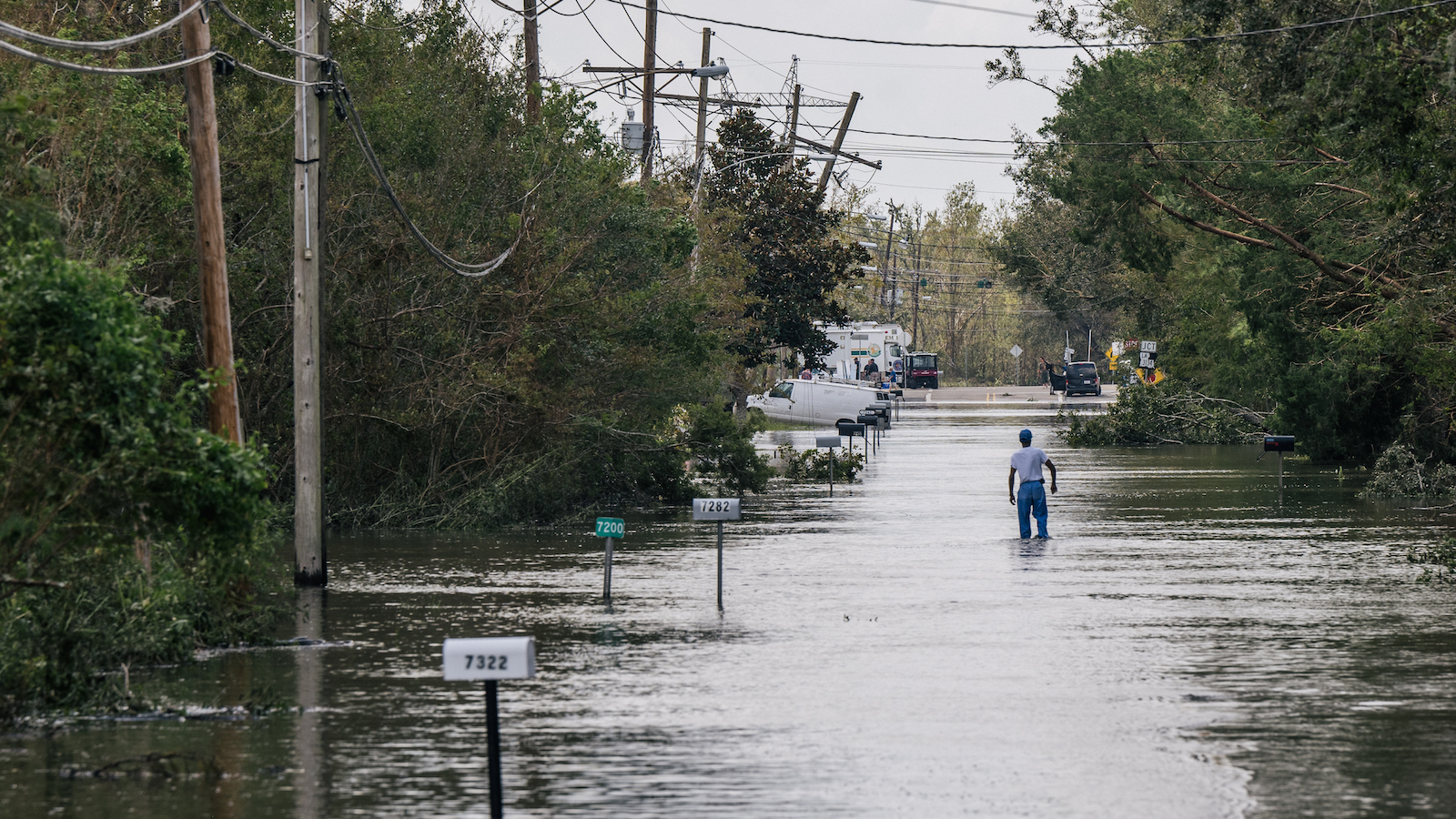When Hurricane Ida made landfall on Sunday in Port Fourchon, Louisiana, the Category 4 storm’s wind speeds clocked in at 150 miles per hour. The gales ripped roofs off structures, toppled transmission lines, caused mass power outages, and pushed an over 12-foot storm surge onto land, flooding wide swaths of coastal Mississippi and Louisiana. Preliminary data suggests it was the fifth strongest hurricane on record to hit the continental U.S., based on wind speed.
But there is another factor that made Ida particularly devastating: Sea levels in parts of the Gulf Coast have risen nearly two feet since 1950, due to both climate change and land subsidence. And scientists note the higher the water level, the more is pushed onto land and the further inland it reaches during a hurricane.
“Ida is an unnatural disaster, at least in part,” Jason West, a professor of environmental engineering at the University of North Carolina Gillings School of Global Public Health tweeted on Sunday. “Climate change makes it stronger, sea level rise makes it more damaging.”
Storm surges can often be the most destructive part of a hurricane — pushing water miles inland. Hurricane Ida’s storm surge was so powerful that it temporarily reversed the flow of the Mississippi River into the Gulf. It also drastically raised the river’s level; normally between 8 to 10 feet, the Mississippi rose to 16 feet during the storm. One levee toppled from the storm surge, sending over 7 feet of water into lower Jefferson Parish, trapping people in their attics.
The Gulf Coast has some of the fastest sea-level rise in the country, increasing 0.3 inches per year. Part of this rapid rise is due to climate change: As oceans warm, water is expanding. Freshwater entering the oceans as glaciers and ice caps melt are also contributing to the increase. The other part of the Gulf’s rapid sea-level rise is due to land subsidence, which happens both naturally and from human activities. Along the Gulf Coast, engineering decisions to drain swampland for development, extract groundwater and oil from the ground, cut canals through the bayous for shipping, and historic flood control measures have resulted in severe land subsidence issues, with places like New Orleans and Houston sinking at a rate of 2 inches per year.
“It’ll only get worse for as long as we continue burning fossil fuels and let global warming continue,” Jonathan Overpeck, a climate science expert at the University of Michigan, said in a press release. (Disclosure: The University of Michigan is an advertiser with Grist. Advertisers have no role in Grist’s editorial decisions.)
According to the latest report by the Intergovernmental Panel on Climate Change, or IPCC, sea level has risen 8 inches globally since 1900. The report states: “Human influence was very likely the main driver of these increases since at least 1971.”
If the world meets the climate goals set out in the Paris Agreement to limit warming to 2 degrees Celsius, climate experts project that global sea level would still rise by between 1.3 to 2.2 feet by 2100, thanks to past emissions already baked into the climate system.
“Even if we were to stabilize global climate change now, the ice sheets will take a while to catch up,” Overpeck told Grist. “They will continue to lose mass, meaning raise sea level for a couple centuries. It’s kind of unstoppable.”
And for coastal communities, sea level rise could continue to make hurricane damage more severe. In a study published in Nature Communications earlier this year, researchers found that sea-level rise was the cause of over $8 billion of the damages during Hurricane Sandy in 2012.
“This case study underscores that human-caused sea level rise has contributed to damages associated with other past coastal floods,” the study authors wrote, “and will increasingly aggravate damages in the future as sea levels continue to rise, driven by anthropogenic warming.”



